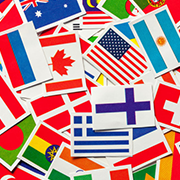General subject related
During the sixth Trade and Technology Council (TTC) meeting, the United States and the European Union committed to improving electronic invoicing (e-invoicing) compatibility. The goal is to reduce global trade costs, enhance security, and streamline business processes like customs, payments, and fraud prevention.
Both sides agreed to a shared set of principles for e-invoicing:
- One connection, global access,
- No fees for switching service providers (Access Points),
- Open exchange networks where users can choose their own Access Point.
The US and EU will continue working together to ensure:
- Flexible data structures that support local legal needs but maintain core standards,
- Aligned invoice information so data is compatible across systems,
- Roaming capabilities that let users connect with each other regardless of service provider.
To support this effort, a new oversight body called the DBNAlliance has been launched from the US E-invoicing Pilot Project. It will:
- Define technical standards, policies, and security rules,
- Offer memberships to service providers (not businesses directly),
- Ensure all service providers can communicate within the network.
Businesses don’t need to join the alliance themselves, they just need a provider who is a member to send and receive e-invoices within the framework.
The Exchange Framework is a technical network designed for safe, standardized sharing of digital documents like invoices. It solves common problems such as how to connect systems, transfer information securely, and enable automation.
It uses a Four-Corner Model, where:
- All businesses act as both senders and receivers,
- Documents are exchanged through certified Access Points,
- Once connected, companies can send invoices to any other business on the network.
It supports:
- AS2/AS4 protocols,
- UBL 2.x structured formats (invoices, credit notes),
- Attachments and electronic signatures,
- Detailed data fields (e.g., supplier/customer info, shipping, taxes, payment info).
The US e-Invoicing Pilot
Led by the Business Payments Coalition and the Federal Reserve, the US tested a national e-invoicing model across three pilot waves in 2022. Over 80 organizations helped finalize specifications, and the system is now ready for widespread use.
E-invoicing helps businesses:
- Automate purchasing and payment workflows,
- Reduce errors, delays, and costs,
- Improve supply chain efficiency and visibility,
Enable cross-border communication and integration.
With both the US and EU aligned on a shared vision for e-invoicing, global trade can become more efficient, secure, and digitally connected than ever before.
Other news from Other countries
Malaysia's E-Invoicing: MyInvois System Goes Live, Phased Implementation
 Other countries
Author: Ljubica Blagojević
Other countries
Author: Ljubica Blagojević
Malaysia is gradually implementing mandatory e-invoicing from August 2024 to January 2026 for businesses with sales over RM150,000. Invoices must be approved by the tax authority before being sent to customers, using the MyInvois system and Peppol network. The rollout supports Malaysia’s push to modernize tax reporting and improve compliance. Malaysia is rolling out its MyInvois e-invoicing system... Read more



TLv6 Implementation Marks Significant Shift in EU’s Trust List Format
A new EU Trust List format, TLv6, will officially replace TLv5 in May 2025 as part of the updated eIDAS Regulation (EU 2024/1183). It introduces key technical changes like a new URI field, updated signature format, and optional phone number support. Organizations must update their systems to avoid signature validation failures and service disruptions, as TLv5 will no longer be valid once TLv6 take... Read more



India's GST E-Invoicing Update: 30-Day Deadline and B2C Expansion
 Other countries
Author: Ljubica Blagojević
Other countries
Author: Ljubica Blagojević
From April 1, 2025, Indian businesses with turnover over ₹10 crore (approx. €112,000) must report B2B e-invoices within 30 days or lose GST input credit. Invoices are validated through the IRP, which issues a unique code and QR for sharing. B2C e-invoicing and e-way bill integration are planned by 2026–2027 to improve compliance. Starting 1 April 2025, Indian businesses with annual turnover over ₹... Read more



Chile: Mandatory Printed E-Invoices/Receipts for Customers Starting May 2025
 Other countries
Author: Ema Stamenković
Other countries
Author: Ema Stamenković
Chilean Internal Revenue Service (SII) issued Resolution No. 12, requiring e-invoices and e-receipts to be delivered to customers for cash, bank transfers, debit, or credit cards, with the option to send a virtual presentation. On January 17th, Chile's tax authority, the SII, released Resolution No. 12. This resolution details new rules for businesses when giving customers printed copies of electr... Read more



Malaysia's E-Invoicing Mandate: AI Solutions for Compliance
 Other countries
Author: Ema Stamenković
Other countries
Author: Ema Stamenković
The Malaysian Inland Revenue Board (IRBM) is implementing new rules that make e-invoicing mandatory in Malaysia, so businesses will need to adopt automated and AI-driven tools to ensure they're following the regulations. The deadline for e-invoicing in Malaysia starts on August 1, 2024, for larger businesses, and full compliance is expected by July 1, 2025. Companies will have to connect with MyIn... Read more



What are the Differences Between Sales Tax and Use Tax in America?
 Other countries
Author: Ivana Picajkić
Other countries
Author: Ivana Picajkić
Sales tax is a small fee added to most purchases, collected by the seller and sent to the government to fund public services. Rates vary by state, and some cities add extra on top. Use tax applies when you buy from out of state or online and don’t pay sales tax, then it’s your responsibility to report and pay it to your state. While both taxes serve the same purpose, they apply in different situat... Read more


